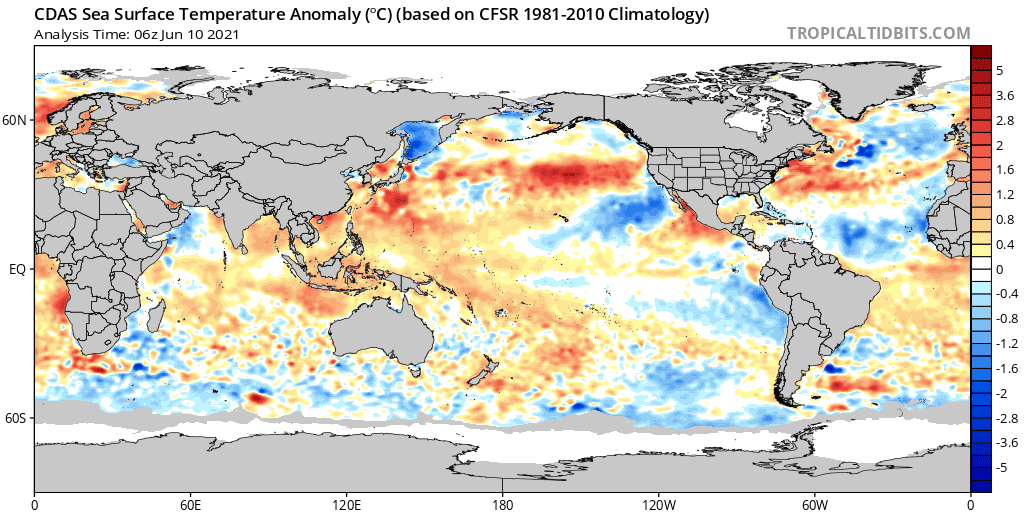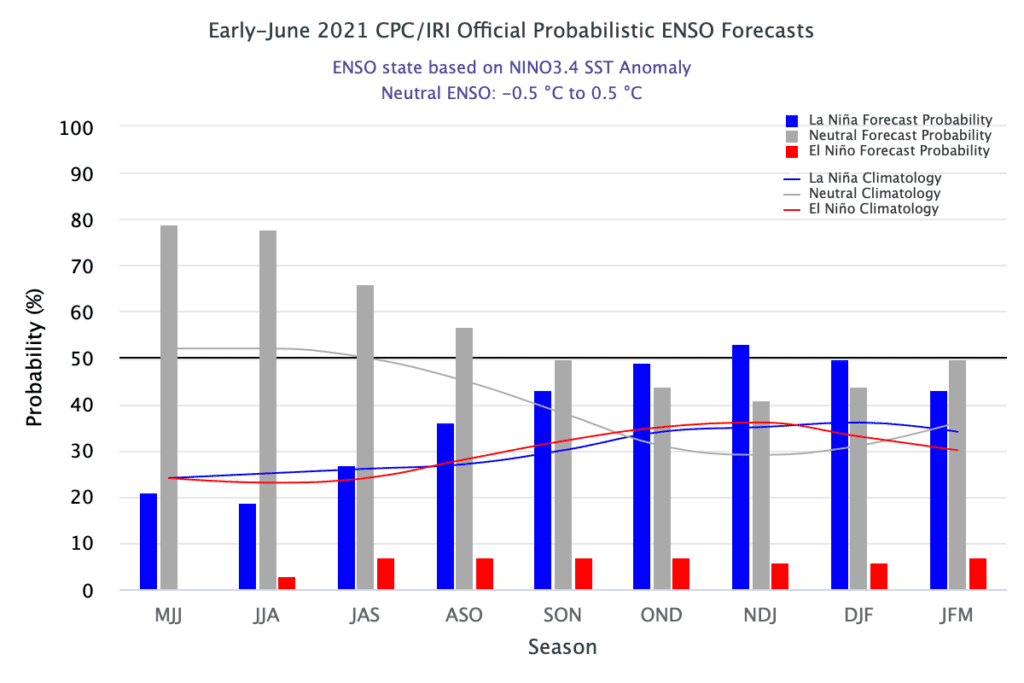ENSO-neutral conditions are present in the tropical Pacific, and NOAA forecasters think they’re likely to continue through the summer. ENSO-neutral is slightly favored through the fall, but it’s a close call between ENSO-neutral and re-developing La Niña for the late fall and winter. That’s the June update from NOAA’s Climate Prediction Center.
Currently, sea surface temperatures in the ENSO monitoring regions are slightly cooler than average, but within the neutral range of +/- 0.5°C from the long-term (1991–2020) average.

Average Sea Surface Temperature (SST) anomalies for June 10, 2021, based on CFSR 1981-2010 Climatology.
Subsurface temperature anomalies are positive, but they’ve decreased slightly due to the weakening of above-average subsurface temperatures around the thermocline in the central Pacific Ocean. Low-level easterly and upper-level westerly wind anomalies extended across most of the equatorial Pacific Ocean. At the Date Line, tropical convection was mostly near average, and enhanced rainfall was evident over the western Pacific Ocean. Overall, the ocean and atmosphere system reflected ENSO-neutral conditions.
According to the CPC, ENSO-neutral conditions are likely through the summer: there’s a 78% chance that the sea surface temperature in the Niño3.4 region of the Pacific ocean will be close to the long-term average—within the neutral range—during June–August. The sea surface temperature in the Niño3.4 region is the primary ENSO-monitoring index.
The latest forecast consensus indicates the chance for neutral drops, and La Niña chances rise, through the fall, until the probability of La Niña overtakes neutral in October–December and reaches 53% for November–January. It’s important to note in the historical record, La Niña has had a tendency to appear in consecutive winters, so a return to La Nina this winter would not be unexpected. But there just isn’t enough evidence yet to tip the scales definitively between neutral and La Niña for this coming winter. One thing we can say with confidence is that chances for El Niño this coming fall/winter are low—less than 10%.

The official CPC/IRI ENSO probability forecast, based on a consensus of CPC and IRI forecasters. It is based on observational and predictive information from early in the month and from the previous month. Image from IRI.
Stay tuned for more updates in the coming weeks as forecasters and the forecast solutions get a better handle on the Pacific trend for this fall and winter.
Bob


Social Media